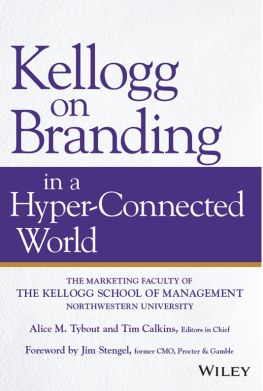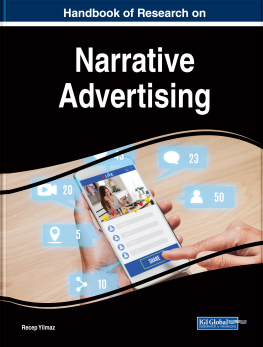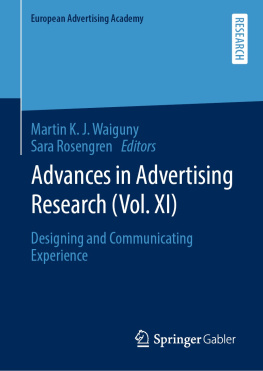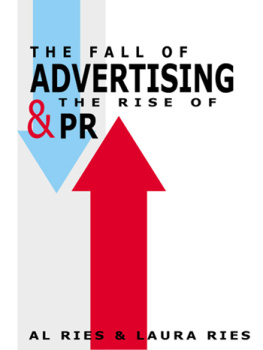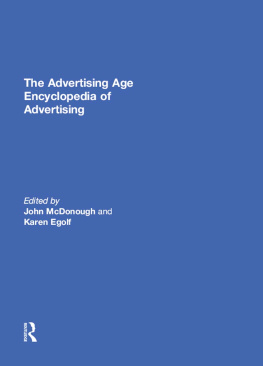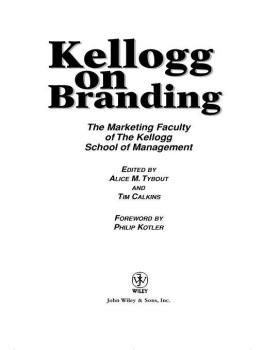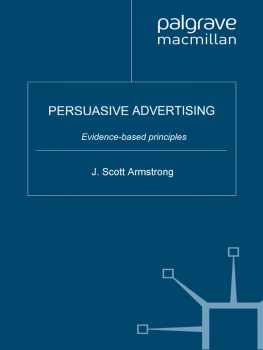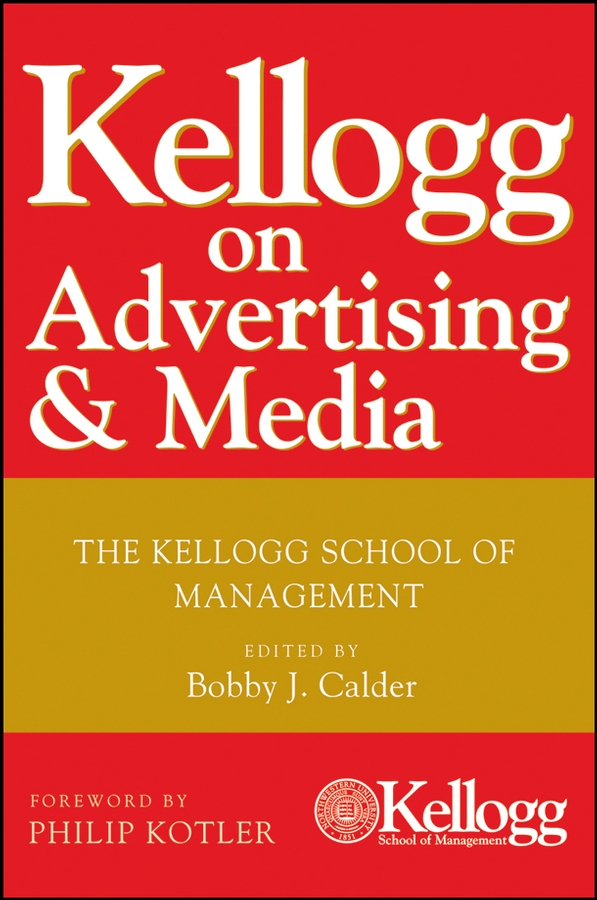Contents

Copyright 2008 by Kellogg Graduate School of Management. All rights reserved.
Published by John Wiley & Sons, Inc., Hoboken, New Jersey.
Published simultaneously in Canada.
No part of this publication may be reproduced, stored in a retrieval system, or transmitted in any form or by any means, electronic, mechanical, photocopying, recording, scanning, or otherwise, except as permitted under Section 107 or 108 of the 1976 United States Copyright Act, without either the prior written permission of the Publisher, or authorization through payment of the appropriate per-copy fee to the Copyright Clearance Center, Inc., 222 Rosewood Drive, Danvers, MA 01923, (978) 750-8400, fax (978) 646-8600, or on the web at www.copyright.com . Requests to the Publisher for permission should be addressed to the Permissions Department, John Wiley & Sons, Inc., 111 River Street, Hoboken, NJ 07030, (201) 748-6011, fax (201) 748-6008, or online at http://www.wiley.com/go/permissions .
Limit of Liability/Disclaimer of Warranty: While the publisher and author have used their best efforts in preparing this book, they make no representations or warranties with respect to the accuracy or completeness of the contents of this book and specifically disclaim any implied warranties of merchantability or fitness for a particular purpose. No warranty may be created or extended by sales representatives or written sales materials. The advice and strategies contained herein may not be suitable for your situation. You should consult with a professional where appropriate. Neither the publisher nor author shall be liable for any loss of profit or any other commercial damages, including but not limited to special, incidental, consequential, or other damages.
For general information on our other products and services or for technical support, please contact our Customer Care Department within the United States at (800) 762-2974, outside the United States at (317) 572-3993 or fax (317) 572-4002.
Wiley also publishes its books in a variety of electronic formats. Some content that appears in print may not be available in electronic books. For more information about Wiley products, visit our web site at www.wiley.com .
Library of Congress Cataloging-in-Publication Data:
Kellogg on advertising and media / edited by Bobby J. Calder.
p. cm.
Includes bibliographical references and index.
ISBN 978-0-470-11986-0 (cloth)
1. Advertising media planning. 2. Advertising. I. Calder, Bobby J. II. J.L. Kellogg Graduate School of Management.
HF5826.5.K46 2008
659.111dc22
2007052392
Foreword
PHILIP KOTLER
Media-based advertising has been first among equals for the traditional Ps of marketing for over a hundred years. Indeed the advertising agency model of translating a companys marketing strategy into carefully crafted messages that are inserted into media vehicles that reach the targeted consumer with appropriate frequency has perhaps been the most defining characteristic of modern marketing. The product/brand manager works with the agency account, creative, and media specialists to communicate to the consumer the benefits of the product. It is a world that generations of marketers have grown up in.
All this is changing. Today, the standard approach to advertising faces many challenges. The most obvious is consumer overload. The sheer amount of advertising clutter has grown to be a burden on consumers. Estimates vary but it is clear that consumers are exposed to thousands of messages a day. At the very least, this means that consumers process ads in an ever more cursory way. Certainly companies attempt to make their ads stand out more, but this is an increasingly uphill battle.
Even more challenging is the fact that consumers themselves are changing. Consumers engage more and more in ad avoidance. They actively seek to limit their exposure to advertising. Digital video recorders (DVRs) are only the tip of the iceberg of this phenomenon. Younger consumers engage in surfing behavior specifically intended to decrease the burden of information overload. They want to take in only information that they actively select. A new millennial generational cohort of consumers may even have trained itself to be fairly oblivious to the advertising around them. And the messages that manage to get through may be subjected to a more critical eye based on a sophisticated, not to say cynical, consciousness of potential manipulation by marketers. It is coming to be as likely for an ad to be posted on YouTube for comment, or ridicule, as it is for the ad to elicit a really strong intention to buy the product.
There is a great need to rethink the traditional approach to advertising. There is a need to think through basic issues such as how to design messages that do not necessarily depend on the consumer consciously processing the messages content. There is a need to think about information that consumers get not from ads but from media coverage of companies and products. There is a need to think about the relative effectiveness of ads carried on traditional media versus ads carried on new digital media. There is a need to think about how ads can be customized to be more relevant to individual consumers. There is a need to think about how ads can be more interactive, facilitating more two-way communication. In general, there is a need to think about how the consumers engagement with the medium affects their response to advertising. All of these issues and more are explored in this book.
This book reflects a continuing interest at the Kellogg School in the future of marketing and advertising. And the realization that changes in media management and media technology will play a profound role in this future. Our MBA program has both a major in marketing and a major in media management. Students frequently combine the two. We have a Media Management Center for research studies that is jointly affiliated with the Kellogg School of Management and the Medill School of Journalism. We have developed relationships with experts in a variety of companies for dialogues about the future of marketing and advertising. The variety of companies represented by contributors to this book reflects this.
It is important to remember that this book is not intended to be the last word on marketing and advertising. Quite the contrary, our hope is that it is among the first words on the change that is taking place and what the future might look like. The book does not present a pat, business trade book approach, telling you how things should be done. The reader is invited to think along with us.
Introduction
Advertising and Media
BOBBY J. CALDER
Not too long ago, this title would have signaled the discussion of narrow issues in the backwaters of marketing. Today, it is the new frontier. The past was cheap media and relatively easy advertising. The future? Well, the future is worth thinking about, but not predicting. That is what this book is about.
Throughout most of the twentieth century, consumers and companies had a bargain. In return for cheap, easily accessible media, consumers agreed to look at ads. It was not a bad deal for either side. It made a companys job of communicating and building brands easier and consumers got cheap information and entertainment. The highpoint was three TV networks that came over the air for free with the turn of a 1 to 13 dial. All the consumer had to do was sit back and watch the ads go by. From there, TV began to fragment into hundreds of networks and the cable bill became a major consumer expenditure. The change was not overnight, the official date will have to wait for hindsight, but the era of cheap media and relatively easy advertising was over. If you are reading this, you have probably gotten the word.


